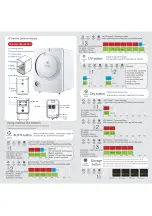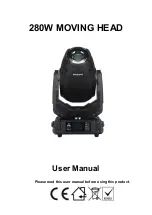
- 2 -
How the backscattering coefficient varies with incidence angle,
ϕ
, is of course an important part of
seabed characterization and in determining the type of material which is on the seabed surface.
The receivers of the multibeams have limited dynamic range and a time variable gain (TVG) is therefore
run during the ping to avoid overload or having the echo return buried in noise. The TVG must be
predicted before reception, and must be devised so that the average signal level in the receiver is at an
optimum level so as to be able to cater for random variations in bottom reflectivity. The limiting factor
here is the A/D converters which with 12 bit as in most systems have 66 dB dynamic range. An
additional reason for running such a TVG is that it will flatten the beam sample amplitudes. This is
beneficial for bottom detection, but also important for display of the seabed image, where one is
primarily interested in reflectivity contrasts, which resolvability is strongly limited by the number of
colors or gray shadings available (or discernable) in today's printers.
When the EM 12 was designed in 1990, an investigation of the literature was done to get an idea of how
backscattering coefficients varied with incidence angle. Unfortunately, most of the reported results dealt
with low grazing angles, i.e. outside the region of interest. The conclusion that was drawn was that for
incidence angles larger than about 25
°
a good approximation for most conditions would be to assume
that a uniform flat bottom is characterized by a mean backscattering coefficient, BS
O
, and that angular
variation is given by Lambert's law, i.e.:
A paper (by Gensane in IEEE JOE Jan. 89) described measured backscattering coefficients versus
grazing angle also gave data near normal incidence. The paper did show deviations from the Lambert's
law, very little though for incidence angles from 40
°
to 80
°
but somewhat larger between 25
°
and 40
°
(but the data given in Urick's standard underwater acoustics book fits Lambert's law well also in this
region). For smaller incidence angles, a reasonable fit to the data could be achieved by the simple
scheme of assuming that the backscattering coefficient changes linearly with incidence angle from BS
N
at
0
°
to BS
O
at 25
°
. Thus, after recognizing that an incidence angle of 25
°
is equivalent to about R = 1.1R
I
,
and replacing the trigonometric functions by the equivalent expressions in R and R
I
, the full model is:
From later literature no reasons for changing the above model has been found, with one exception. The
crossover angle between the two regions has been shown to be quite variable depending on material
type, and can be anywhere in the 5-30
°
region.
3. Implementation
BS = BS + 20
(
)
O
log cos
ϕ
BTS = BS + 3.162 R / R - 1(BS - BS )- 5
(R / R ) [(R / R ) - 1]
+10
c
2
R for R < R < 1.1R
N
I
O
N
I
2
I
2
x
I
I
log
log
τ
θ
BTS = BS - 5
(R / R ) [(R / R ) - 1]+ 10
c
2
R for R 1.1R
O
I
2
I
2
x
I
log
log
τ
θ
≥
BTS = BS +10
R forR R
N
x
y
2
I
log
θ θ
≤























